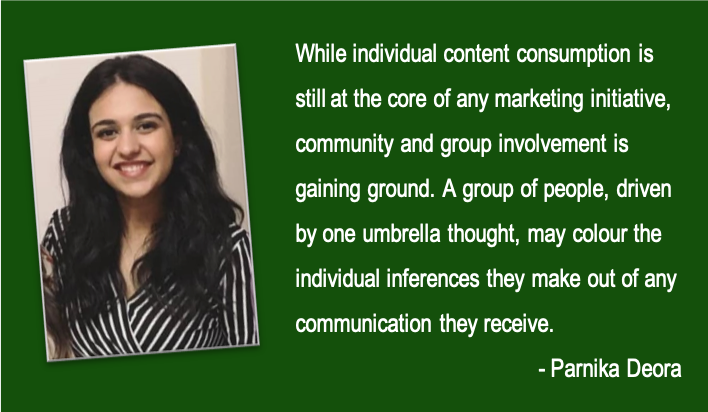We know and accept, that the ramifications of COVID-19 have fundamentally altered our lives. From our work-life shenanigans to the way we consume infotainment to how we relate to others, the pandemic has brought about a gargantuan change. As adept communicators, we can see an inexorable shift happening in the branding and communications space, from ‘I’ to ‘us’.
Consumers are heterogeneous and have niche requirements – this is something that we have been trying to understand and master as communications professionals. The biggest failure of the hypodermic needle theory is precisely the fact, that it assumes that the audience merely consumes content. The theory takes the consumer to be a part of a passive audience that decodes a message shot at them, just how the communicator intended it to be received as. But is this model as erroneous as we think? Do we not sometimes take a message as its shot at us because it strengthens our pre-conceived notions?
COVID-19 pricked us and we bled loneliness. Everyone was confused, uncertain and stressed. Every profession was grappling with the realities of work from home and all brands were racking their brains as to how they would weather this storm. Brands wanted to remain relevant and prepared for all COVID induced problems and their consumers wanted to see how they fared. What was missing from the space was reliability, trust and decisiveness. Consumers felt isolated and wanted to be a part of something big.
This was the perfect time for brands, personalities and influencers to step up and own their narrative. No matter how uncertain the future seemed, they had to focus on the ‘us’. The “us” here signifies all those who trust the brand, engage with it and anyone who consumes similar content. Handholding your audience during such stressful times really helps a brand create a reputation for itself. The need for forging new connections or strengthening old ones was at an all-time high during the lockdown and consumers were extensively relying on online mediums to help them.
For example, Netflix came out with Netflix Party, a Google Chrome extension that allows subscribers to watch TV shows and movies with others remotely and in-sync. It even comes with a real-time chat option. Netflix was a brand that understood this void that their audience was feeling due to restrictions on their lifestyle. They built on this insight of connections and came out with a product that was revolutionary, in a sense. People were ecstatic at this new offering and it increased the number of brand loyalists and advocates for Netflix.
From an individualistic approach of ‘I’, Netflix took an ‘us’ centred community approach. In times of loneliness and isolation, where mental health issues are plaguing every country, one can see the importance that social interactions hold. Brands that help people in forging connections so that they feel a part of something big, hold relevance in today’s time. Amidst this earth-shattering pandemic, coming up with narratives that allow brands to bring people together under a certain label may actually work in their favour. Apps such as Houseparty, Ludo etc. gained tremendous popularity because their USP was based on an ‘us’ approach of togetherness and making connections.
What we can see today is differentiation based on communities, interest groups and their choices. While individual content consumption is still at the core of any marketing initiative, community and group involvement is gaining ground. A group of people, driven by one umbrella thought, may colour the individual inferences they make out of any communication they receive. What brands should do is try and focus on like-minded people, interest groups and drive a communications plan that makes them feel strong, empowered and most importantly, not alone.
The views and opinions published here belong to the author and do not necessarily reflect the views and opinions of the publisher.



Be the first to comment on "In a world full of ‘I’s, be an ‘Us’"